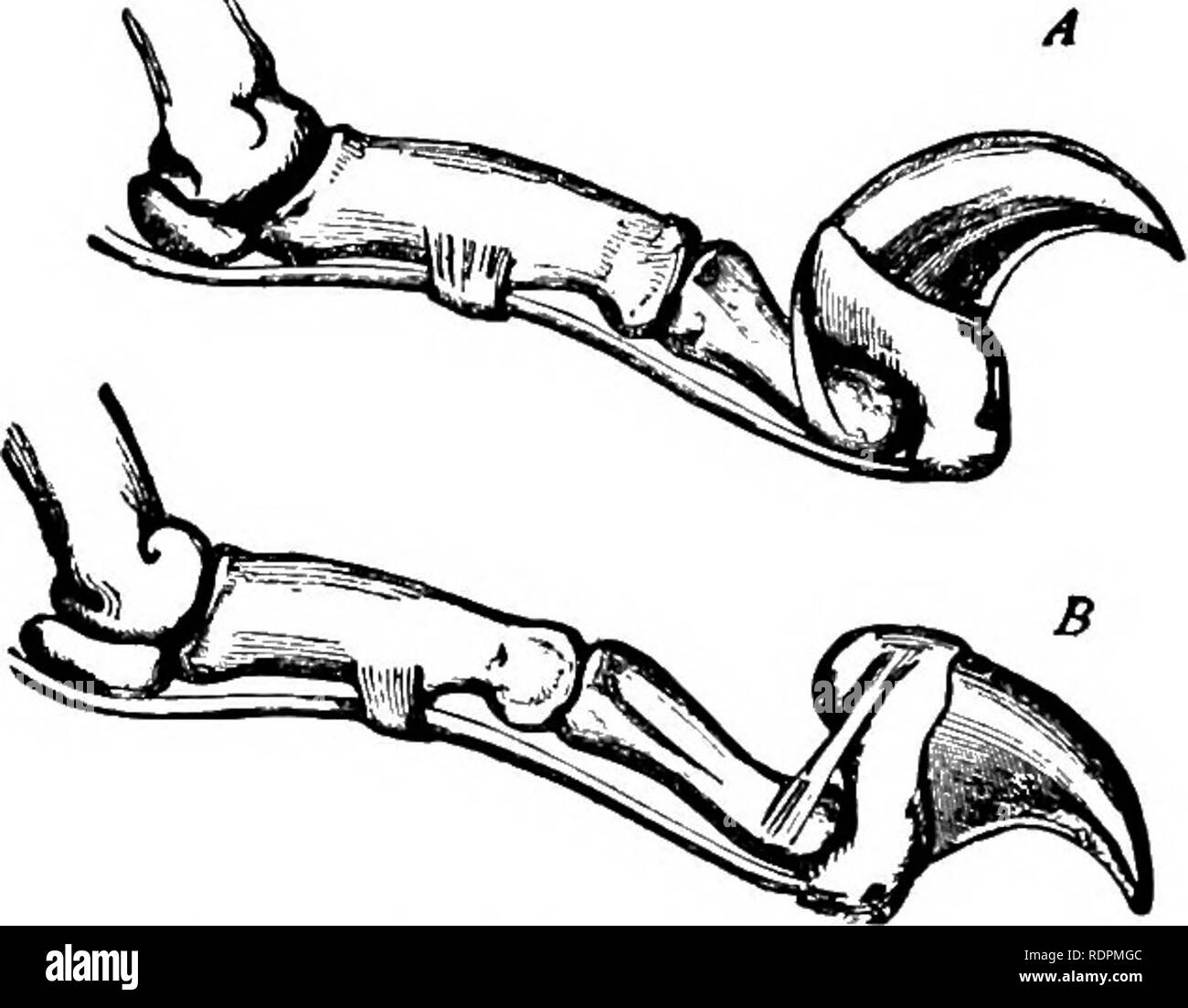. Principles of economic zoo?logy. Zoology, Economic. 358 BRANCH CHORDATA many of them are valuable for their fur. The cat and dog have been domesticated. The Terrestrial Carnivora {Fissipe'dia).—The number of digits may be five on each foot, but is often reduced to four on the hind feet, as in cats and dogs, and sometimes to four on the front feet, as in Hyce'niche, but the reduced first toe may bear a claw. The cat family {Fe'lidce) includes the hons, tigers, leopards or pan- thers, jaguars, pumas, lynxes, wildcats, etc. They are widely distributed in both the Old World and the New, but are

Image details
Contributor:
The Book Worm / Alamy Stock PhotoImage ID:
RDPMGCFile size:
7.2 MB (217.4 KB Compressed download)Releases:
Model - no | Property - noDo I need a release?Dimensions:
1791 x 1396 px | 30.3 x 23.6 cm | 11.9 x 9.3 inches | 150dpiMore information:
This image is a public domain image, which means either that copyright has expired in the image or the copyright holder has waived their copyright. Alamy charges you a fee for access to the high resolution copy of the image.
This image could have imperfections as it’s either historical or reportage.
. Principles of economic zoo?logy. Zoology, Economic. 358 BRANCH CHORDATA many of them are valuable for their fur. The cat and dog have been domesticated. The Terrestrial Carnivora {Fissipe'dia).—The number of digits may be five on each foot, but is often reduced to four on the hind feet, as in cats and dogs, and sometimes to four on the front feet, as in Hyce'niche, but the reduced first toe may bear a claw. The cat family {Fe'lidce) includes the hons, tigers, leopards or pan- thers, jaguars, pumas, lynxes, wildcats, etc. They are widely distributed in both the Old World and the New, but are absent in Australia. They seem to have evolved in the Old World first, migrating to North America at the close of the Pliocene, and from thence to South America. The legs are relatively .short and the claws are retractile. The terminal. Fig. 291.—Bones and ligaments of the toe of a cat, showing the claw re- tracted {A) and protruded {B). joint bearing the claw (Fig. 291) folds back into a sheath by the outside of or above the middle joint, and is held there by a strong ligament. This is the natural position of the claw and prevents it from friction. When wanted for aggression or defense it is pulled into position by the flexor muscles bearing the claw. The raccoons (Proci/on'idce), placed by some with the bear family, are plantigrade and omnivorous, eating anything in the way of fish, oyster, crayfish, flesh or fowl, and green vegetables especially corn. They have the peculiar habit of washing their food. They are nocturnal. The limbs are long and the soles of the f(>ot naked. "The raccoon is at home in the timbered regions of the southern and eastern United States whore there are swamps, " for it loves to play and to fish in the water. It has long active fingers, and uses its hands as clovcrly as a monkey. It makes its home in the hollow limb of a tree. The annual family of five or six yoimg follow the mother about for a y(r. In .ugust the "coons"